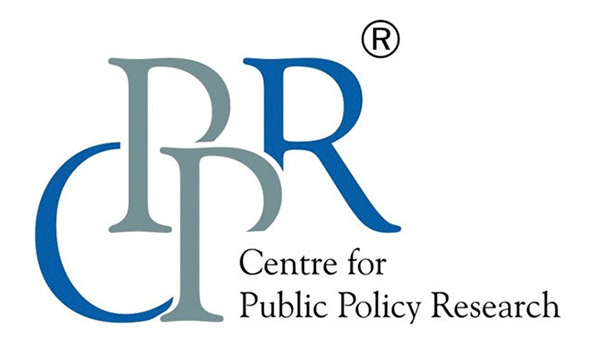From the blog

Bicycles: Is it an Alternative Mode of Transport in Contemporary Indian Cities? Discussion Around Challenges and Factors to Be Considered
July 11, 2023
Migration of Keralites to Developed Countries
July 11, 2023Land Titles to Slum Dwellers: A Solution to the Affordable Housing Crisis?

Urbanisation opened up employment opportunities that drove people from rural areas to urban cities. However, the difficulty of affording a house pushed these labourers, who were mostly migrants, to live in informal settlements that gradually evolved into slums. The earliest policies on slums primarily focused on slum clearance, demolition, and relocation to the outskirts of the city. Despite the intention to improve their living conditions and address urban issues, the relocation approach failed to prevent new slums from forming. Newly relocated housing was often situated far away from their workplaces and disrupted their livelihoods by breaking the close-knit communities that they had established in their slum neighbourhoods. As a result, a significant number of households chose to return to slums, leaving their new homes vacant or selling them off.
This makes one thing clear; relocation does not do the magic of improving slums, nor does it help with affordable housing. So then what does? In my quest for answers, I went through the different approaches adopted by different state governments. It became apparent that many state governments have considered the idea of providing “land titles” to slum inhabitants as a potential solution, an idea embraced by a few and met with disagreement by a few others.
Is land titling the best solution?
A parcel of land with a registered address and ownership forms a basic identity proof for a multitude of economic and social endeavours like education and access to credit. With an identity and proof of residence, there is an improved chance of slum inhabitants finding better jobs with better pay.
The 69th Round Slum Survey (2012) showed that at an all-India level, 44% of slums are situated on private land and 55% on public land. Few states like Odisha and Delhi have embraced the idea of land titling, and they have been successful in its implementation because almost all of their urban slums are on public land. Unlike the relatively straightforward approach of granting land titles on public land, acquiring private land for this purpose requires legal complexities and negotiation.
The land is scarce and thus holds value. Land ownership carries with it legal and economic procedures, making it a complex and regulated affair. Granting land requires the beneficiaries to have some form of identification, like an Aadhar, ration, or BPL card, which many slum inhabitants lack, including a birth certificate.
Land ownership is a facilitating mechanism to help individuals acquire identification documents. At least this is one way to incentivise people to get themselves registered. But there are other easier ways to provide incentives for people to get registered. But that is not our problem here. The target is ultimately affordable housing. Can land titles improve the situation of the affordable housing market? Unfortunately, no.
Granting titles to slum inhabitants will have a ripple effect on the price of land and property throughout the city, making it even more expensive to live there. This is going to make land very scarce and cities very congested. Development drives demand. When these people find better jobs and incomes, it is going to raise the overall demand in the market and attract more people from outside. Congested cities pose the issue of limited per capita availability of resources, resulting in inadequate provisions for each individual and a depletion of resources. This issue stands out in the context of water and electricity. As the prices of these essential services rise, a significant portion of the population may struggle to afford them. This will make cities unlivable for those who still cannot make it out of the poverty trap.
The likelihood of residents selling their properties is higher when they are provided houses or apartments instead of land due to their inability to afford the maintenance of the dwelling. When there is not enough capital to build a house and it is located in a highly demanded spot in the middle of the city, there is a high chance of renting out or selling their “newly titled land”. Land given for free may encourage households to sell it, distorting the land market. Titling bills prevent the sale of the land for a period of time, but many plot owners sell their land to estate agents using the power of attorney, completely bypassing the restriction. This speculative behaviour can create an inflationary trend in the land market.
While slum redevelopment is an approach aimed at addressing affordable housing needs, it does not fully meet the growing demand for affordable housing as urbanisation continues. Besides, this move primarily benefits the individuals living in tenable slums, which questions the inclusivity of land titling missions. Slum inhabitants in untenable slums, characterised by their ecologically sensitive and disaster-prone structure, face vulnerable living conditions, necessitating the relocation to vacant residential lands within or outside city limits.
Hence, a feasible solution would be to shift the congestion to smaller cities or extend cities. Land titling is not a bad move. It is, in fact, a good move towards slum redevelopment. The ideal approach to slum redevelopment would focus on improving livelihoods without necessitating relocation or affecting land property rights throughout the city. It should aim to alleviate slum inhabitants from the additional financial burden that comes in the form of high costs of living and maintenance costs associated with the redevelopment process.
Annabel Thomas, Research Intern, CPPR
Views expressed by the author are personal and need not reflect or represent the views of the Centre for Public Policy Research.

